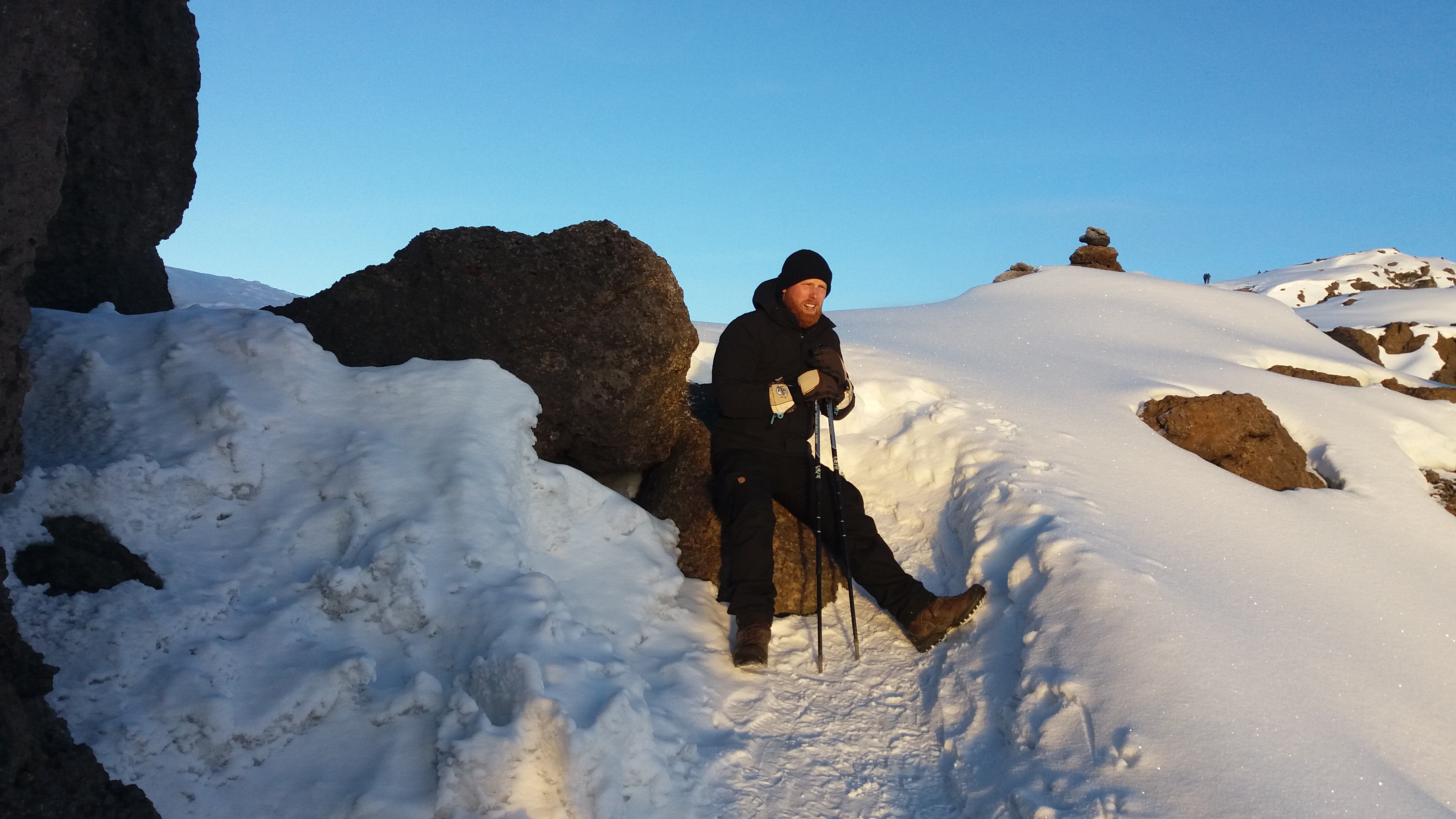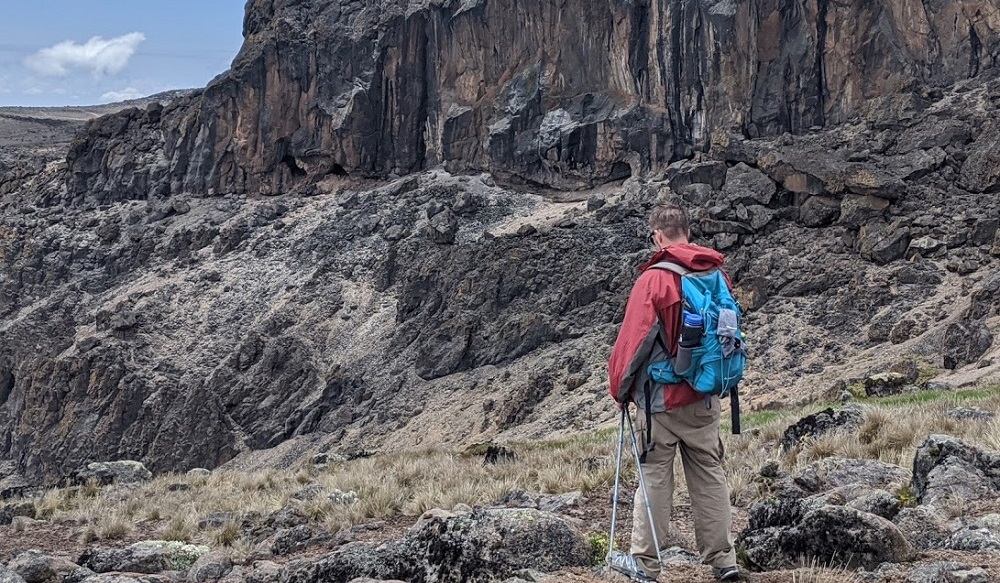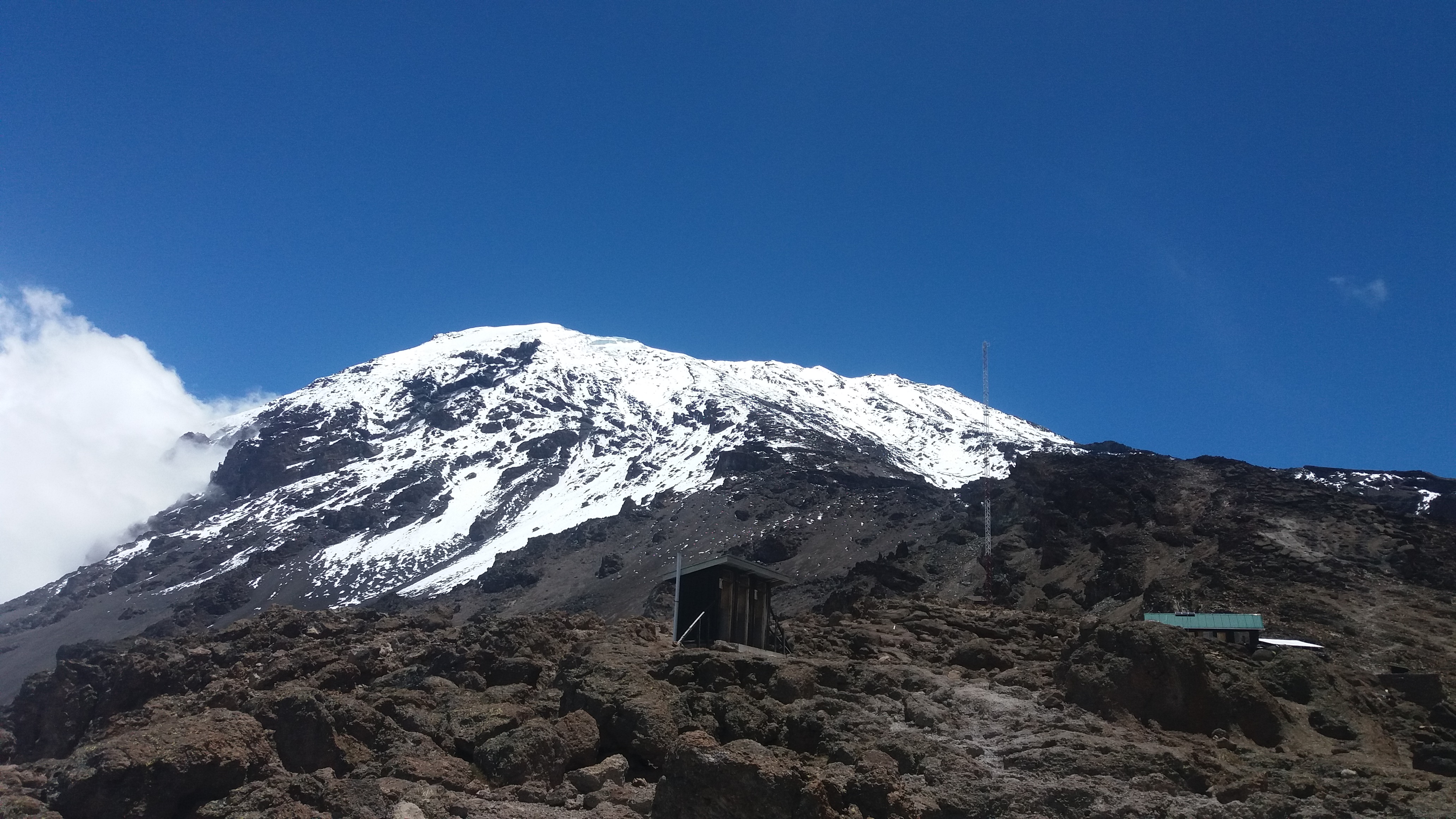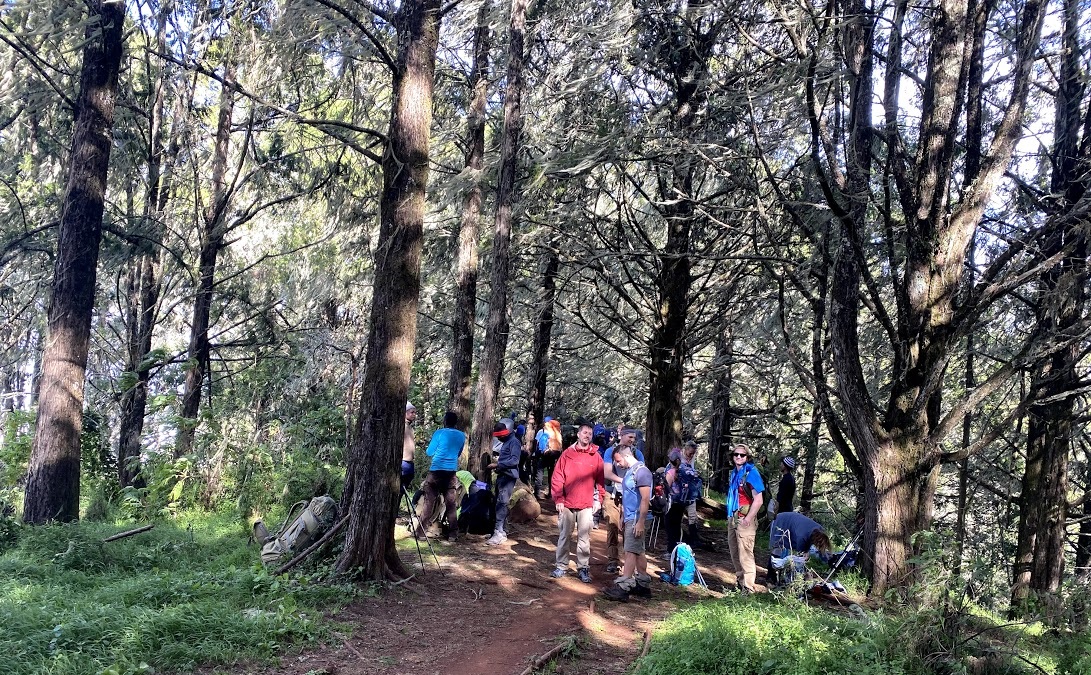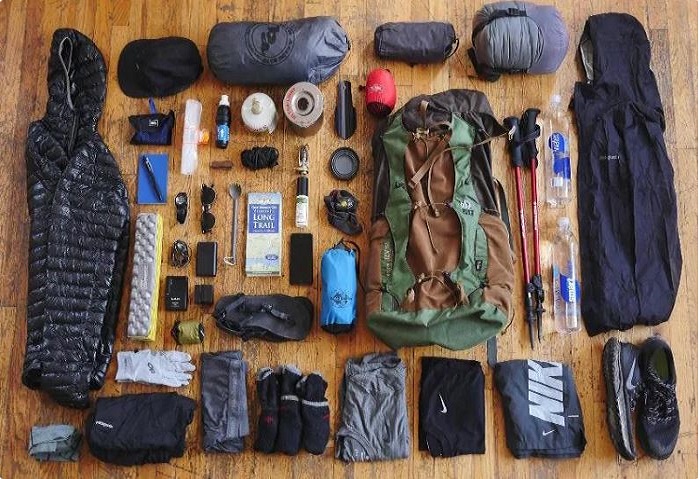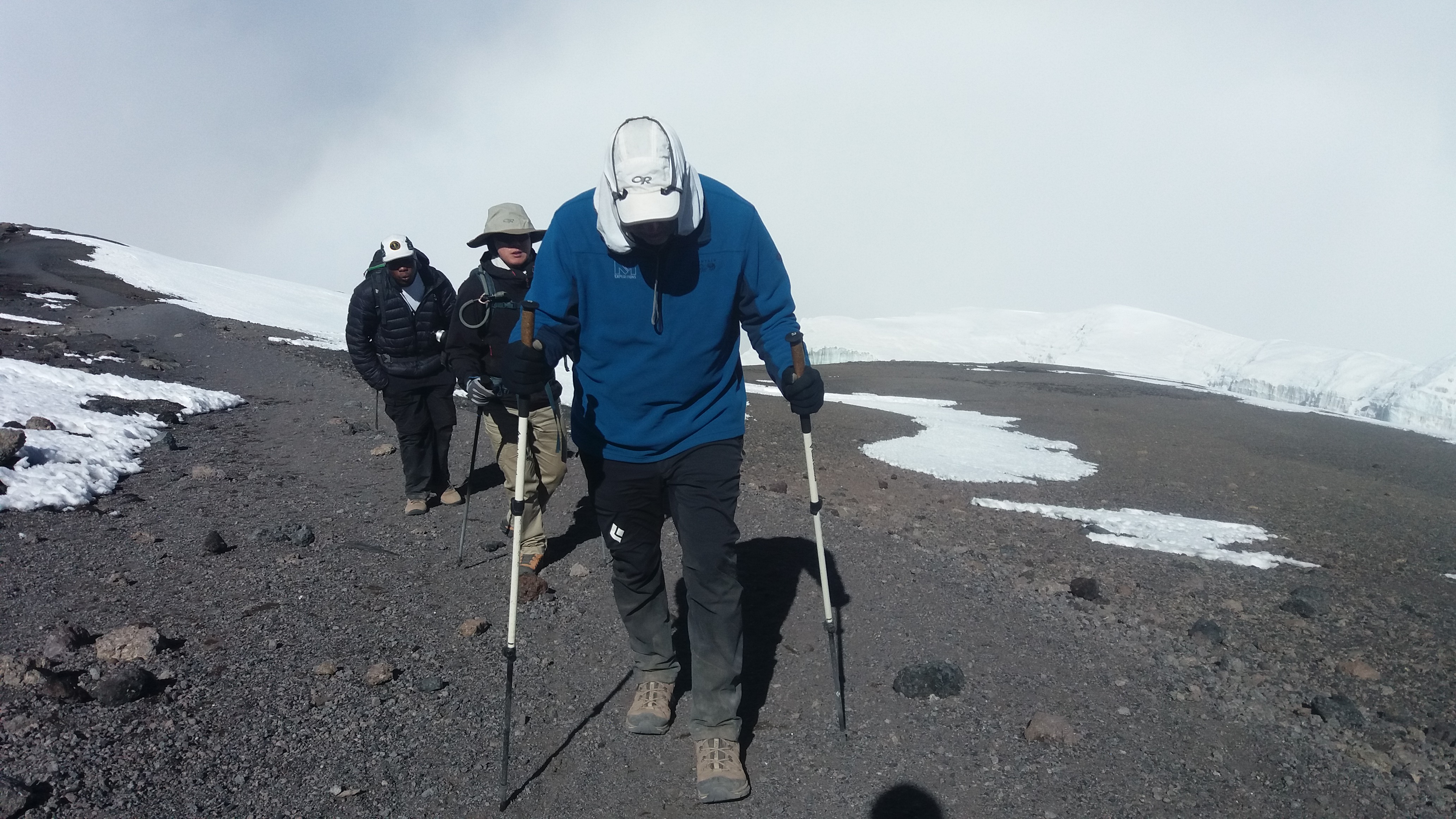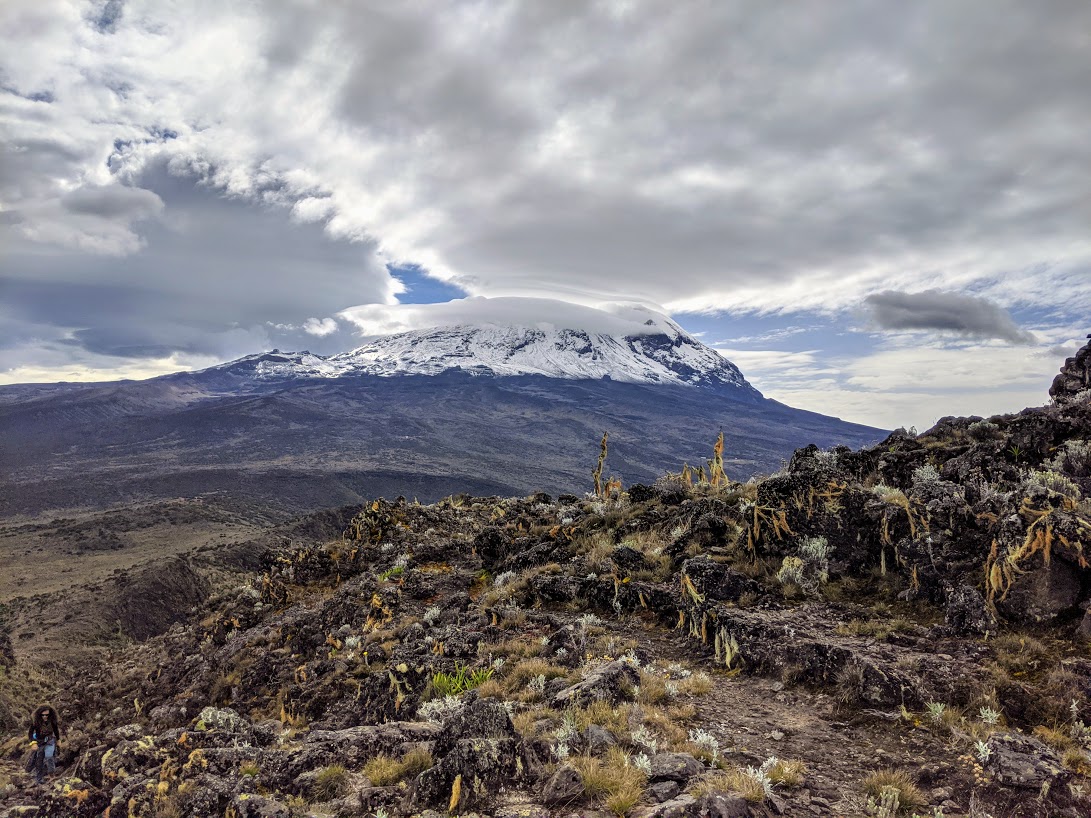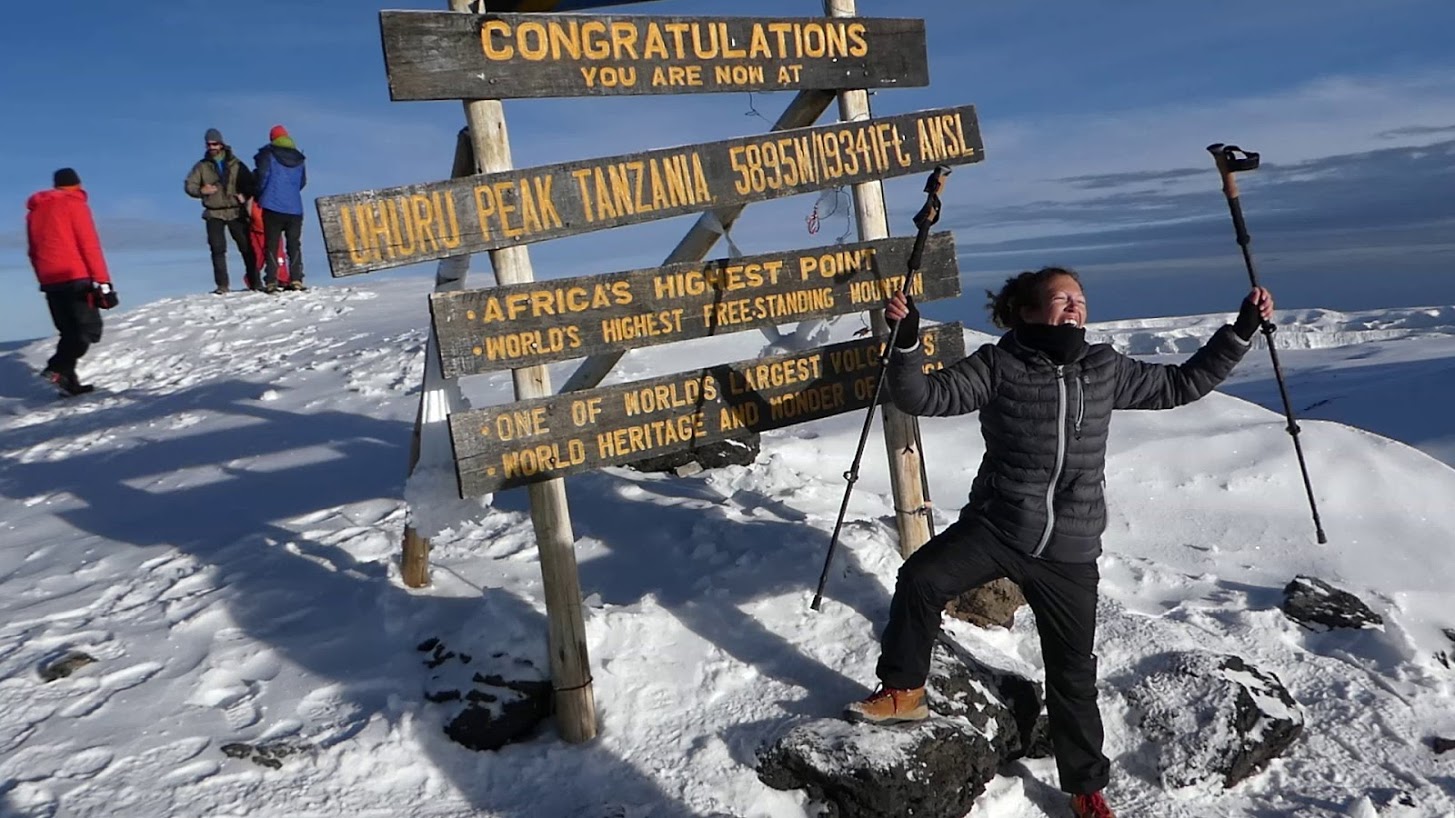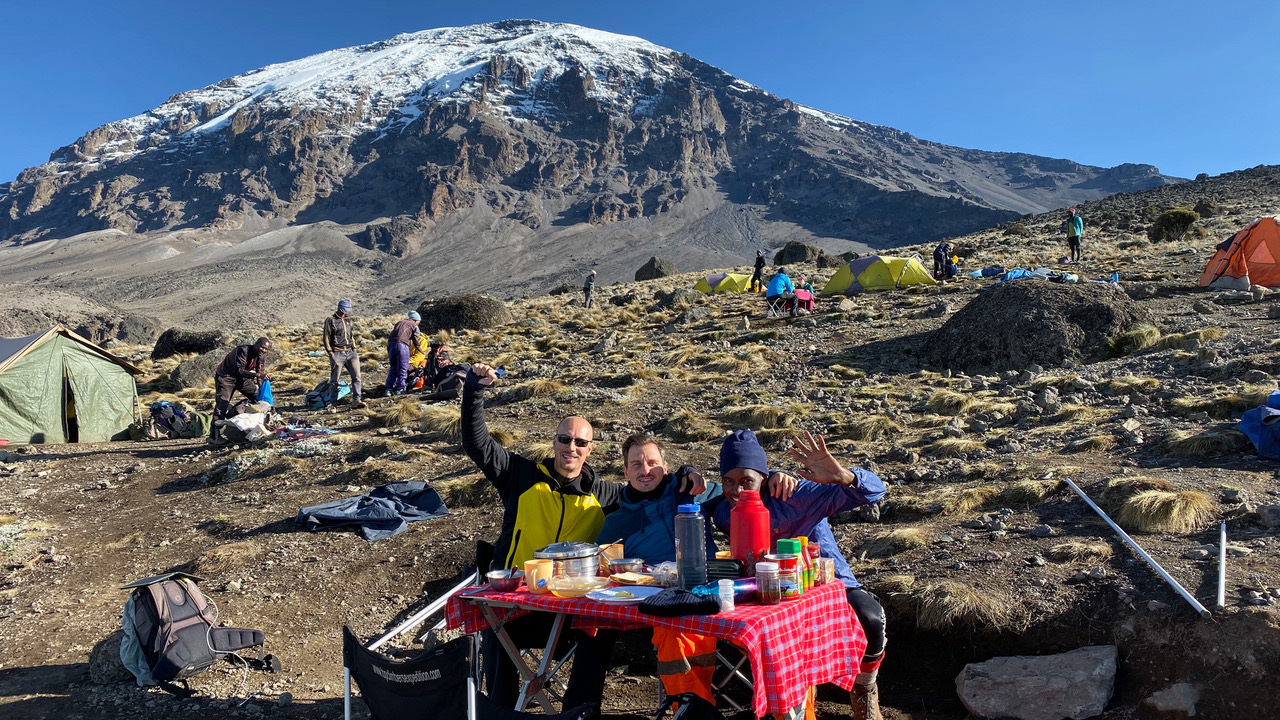Rongai Route overview
The Rongai Route is one of the most remote and least-crowded trails on Mount Kilimanjaro, offering a peaceful and scenic ascent from the mountain’s northeastern side near the Kenyan border. At Kilimap Adventures, we recommend this route for trekkers seeking a quieter, more solitary experience with excellent opportunities to observe wildlife and enjoy unique landscapes. The route is typically completed in 6 or 7 days, with the 7-day option providing better acclimatization and a higher summit success rate.
The trail begins in the lowland forests of Rongai, where trekkers may spot Colobus monkeys and other native wildlife. As you ascend, the landscape transitions through moorlands and alpine desert, offering dramatic views of Mawenzi Peak, Kilimanjaro’s second-highest volcanic cone. Compared to other routes, Rongai is drier and sunnier, making it a good option during the rainy seasons. Despite its relative remoteness, the route still passes through all five of Kilimanjaro’s climatic zones, culminating in a final summit push from Kibo Hut via Gilman’s Point.
One of the route’s highlights is its unspoiled wilderness feel, with fewer trekkers and a stronger sense of isolation. The trail eventually merges with the Marangu Route for the final ascent and descent, allowing trekkers to experience both the northern and southern sides of the mountain.
The name Rongai is derived from the surrounding region, home to semi-nomadic communities and rich cultural traditions that date back generations. The route provides not only a physical challenge but also an opportunity to connect with the natural and cultural heritage of Kilimanjaro.
With its gradual ascent, wildlife sightings, and remote landscapes, the Rongai Route is ideal for those looking for a less-traveled, steady, and scenic climb to the Roof of Africa.
Map of Rongai Route
success Rate Rongai Route
Here are the summit success rates for our Shira Route expeditions:
- Rongai 6-Day – Crater Rim: 89.1%, Uhuru Peak: 80.4%
- Rongai 7-Day – Crater Rim: 94.3%, Uhuru Peak: 90.2%
As you can see, the 7-day Rongai itinerary offers a significantly higher summit success rate due to its extra acclimatization day and more gradual approach. The additional time helps trekkers better adjust to the altitude, improving the likelihood of reaching both the crater rim and Uhuru Peak safely and successfully.
The Rongai Route joins the Marangu Route near Kibo Hut for the final summit push via Gilman’s Point. While it is one of the few routes that approach Kilimanjaro from the north, it still offers the full experience of traversing the mountain’s five ecological zones.
The Rongai Route is especially suited for those looking for a quieter trail with a drier climate, making it a good option even during the wet seasons. Its steady ascent profile, coupled with reduced foot traffic and opportunities for wildlife encounters, makes it a solid choice for both novice and seasoned trekkers aiming for a high summit success rate.
SHIRA ROUTE ITINERARIES
7 Day Rongai Itinerary
Destination:Kilimanjaro via Rongai Route
Major Attractions:Kilimanjaro, Africa’s highest mountain
Tour Guides Language: English
Starting Point: Moshi
Ending Point: Moshi
Route Accessibility: The routeapproaches the mountain form the north close to the Kenyan border. Because of its position,
it has few crowds of people compared to other routes.
Additional info: Provide porters and cookers for guidance and assistance while on the mountain.
DAY 1: Rongai Gate (2364M) to Simba Campsite (2670M)
Drive to Rongai gate from Moshi for registration process. Start climbing through the rain forest “pole pole”. The trail finally leads to Simba campsite to arrive in the evening. Dinner and overnight stay at the campsite.
Distance: 7 Kilometers.
Time: 3 Hours walking.
Zone: Moorland.
DAY 2: Simba Campsite (2670M) to Kikelewa Campsite (3600M)
Hike from Simba campsite “pole pole” while noticing changes in vegetations. The trail leads to second cave to have a lunch break. Proceed with the climb to arrive at Kikelewa campite in the evening. Dinner and overnight stay at the campsite.
Distance: 16 Kilometers.
Time: 8 Hours walking.
Zone: Moorland.
DAY 3: Kikelewa Campsite (3600M) to Mawenzi Tarn Hut (4335M)
Hike onto the Alpine zonethe steep climb towards the Mawenzi tarn hut. Arrive in the afternoon time for lunch. Have the rest of the day off resting and gain some energy for the next day. Set the campsite for an overnight stay.
Distance: 5 Kilometers.
Time: 3 Hours walking.
Zone: Alpine desert.
DAY 4: Acclimatization day at Mawenzi Ridge
The day is meant for acclimatization which allows your body getting used to high altitude and low oxygen levels. Take a walk exploring the landscapes for one hour and long rest for the day. Return back to the campsite in time for hot lunch. Dinner and overnight stay at the campsite.
Distance: Kilometers.
Time: Hours walking.
Zone: Alpine desert.
DAY 5: Mawenzi Tarn (4335M) to Kibo Hut (4720M)
Climb gradually through the saddle area between beautiful peaks of Kibo and Mawenzi. Proceed with the trail while displaying beautiful views of Kibo and Mawenzi peak. Arrive at Kibo hut at afternoon for the hot lunch. Take as much rest and drink water upon arrival to prepare your body for the summit. Dinner and overnight stay at the campsite. It’s recommended to sleep early around 7:00pm for the summit.
Distance: 10 Kilometers.
Time: 5 Hours walking.
Zone: Alpine desert.
DAY 6: Ascend to Uhuru Peak (5895M)
Wake up around 23:00 for adding more warm clothes and head lamp. Leave the campsite and start summiting by midnight into the glacial zone. The path leads to Gilman’s point 5681Mand then to Stella point 5756M. Have time for pictures and hot tea or drinking water at Stella point. For climbers who have experienced AMS are advised to start descending, however for those interested can take a round trip along the crater rim to reach Uhuru peak 5895M. Proceed by descending to Kibo hut again for 3 hours walking and 2 hours for the short rest at the campsite. After a short rest wake up and repack all stuffs in the sleeping tent, have branch and start to descend to Horombo hut for overnight and dinner.
Distance: 6 Kilometers.
Time: 6/7 Hours.
Zone: Alpine/Glacial zone.
DAY 7: Horombo Hut (3720M) to Marangu Gate (1800M)
After the hot breakfast, continue hiking through the beautiful rain forest to arrive at Marangu gate. Get awarded with certificates whereby golden certificates are given to hikers who reached at Uhuru peak and green certificates for Stella point hikers. Retreat back to Marangu village for a drive to Moshitown for resting or airport for a flight back at home. “Normally tipping can be done to the last campsite or at the certain gate”.
Distance: 19 Kilometers.
Time: 5 Hours.
Zone: Rain forest.
6 Day Rongai Itinerary
Destination: Kilimanjaro via Rongai Route
Major Attractions:Kilimanjaro, Africa’s highest mountain
Tour Guides Language: English
Starting Point: Moshi
Ending Point: Moshi
Route Accessibility: The routeapproaches the mountain form the north close to the Kenyan border. Because of its position,
it has few crowds of people compared to other routes.
Additional info: We provide porters and cooks for guidance and assistance while on the mountain.
DAY 1: Rongai Gate (2364M) to Simba Campsite (2670M)
Drive to Rongai gate from Moshi for registration process. Start climbing through the rain forest “pole pole”. The trail finally leads to Simba camp to arrive in the evening. Dinner and overnight stay at the campsite
Distance: 7 Kilometers
Time: 3 Hours walking
Zone: Moorland
DAY 2: Simba Campsite (2670M) to Kikelewa Campsite (3600M)
Hike from Simba campsite “pole pole” while noticing changes in vegetations. The trail leads to second cave to have a lunch break. Proceed with the climb to arrive at Kikelewa campite in the evening. Dinner and overnight stay at the campsite
Distance: 16 Kilometers
Time: 8 Hours walking
Zone: Moorland
DAY 3 : Kikelewa Camp (3600M) to Mawenzi Tarn Hut (4335M)
Hike onto the Alpine zone the steep climb towards the Mawenzi tarn hut. Arrive in the afternoon time for lunch. Have the rest of the day off resting and gain some energy for the next day. Set camp for an overnight stay
Distance: 5 Kilometers
Time: 3 Hours walking
Zone: Alpine desert
DAY 4: Mawenzi Tarn (4335M) to Kibo Hut (4720M)
Climb gradually through the saddle area between beautiful peaks of Kibo and Mawenzi. Proceed with the trail while displaying beautiful views of Kibo and Mawenzi peak. Arrive at kibo hut at afternoon for the hot lunch. Take as much rest and drink enough water upon arrival to prepare your body for the summit. Dinner and overnight stay at the campsite. It’s recommended to sleep early around 7:00pm for the summit
Distance: 10 Kilometers
Time: 5 Hours walking
Zone: Alpine desert
DAY 5: Ascend to Uhuru Peak (5895M)
Wake up around 23:00 for adding more warm clothes and head lamp. Leave the campsite and start summiting by midnight onto the glacial zone. The path leads to Gilman’s point 5681Mand then to Stella point 5756M. Have some time for pictures and hot tea or drinking water at Stella point. For climbers who have experienced AMS are advised to start descending, however for those interested can take a round trip along the crater rim to reach Uhuru Peak 5895M. Proceed by descending to Kibo hut again for 3 walking and 2 hours of short rest at the campsite. After a short rest wake up and repack all stuffs in the sleeping tent have branch and start to descend to Horombo hut for overnight and dinner
Distance: 6 Kilometers
Time: 6/7Hours walking
Zone: Alpine desert zone/Glacial zone
DAY 6 : Horombo Hut (3720M) to Marangu Gate (1800M)
After the hot breakfast, continue hiking through the beautiful rain forest to arrive at Marangu gate. Get awarded with certificates whereby golden certificates are given to hikers who reached at Uhuru peak and green certificates for Stella point hikers. Retreat back to Marangu village for a drive to Moshitown for resting or airport for a flight back at home. “Normally tipping can be done to the last campsite or at the gate”
Distance: 19 Kilometers
Time: 5 Hours
Zone: Rain forest
